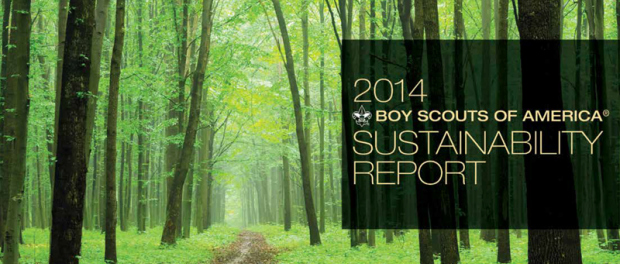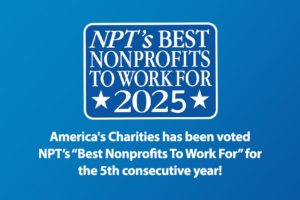Sarah Ford | November 5, 2014
7 takeaways from the 2014 BSA Sustainability Report
At Philmont Scout Ranch last year, crew members helped recycle 59 tons of cardboard, 2.8 tons of plastic and 900 pounds of aluminum, resulting in $91,000 in savings to Philmont.
At Camp Emerald Bay in California, spring-loaded water fountains and pull-string showers have drastically cut water use in a drought-stricken area.
And at Camp Guyasuta in suburban Pittsburgh, a new, 12,000-square-foot education center has achieved green-level LEED certification, turning a struggling camp into one that serves 33,000 visitors a year.
What’s the takeaway? The Boy Scouts of America has this sustainability thing figured out. But we can do more.
These and other great findings were included in the 2014 BSA Sustainability Report, released last week at the 2014 Sustainability Summit in West Virginia.
I’ve included a link to the report below, and I’ve pulled out seven takeaways that jumped out at me.
While reading the report, one thing became clear: Under the leadership of John F. Stewart, BSA Sustainability Director, great things are happening in the Boy Scouts of America as we go from “green to deep green.”
“We in Scouting are intent on helping our members move from leaving no trace to leaving a positive legacy,” Stewart wrote in a recent email to BSA Scout Executives. “We are working hard to integrate sustainability at every level of our organization and are committed to developing the next generation of responsible leaders.”

Get Resources and Insights Straight To Your Inbox
Explore More Articles
For Fifth Consecutive Year America’s Charities Named ‘Best Nonprofit To Work For’
Washington, D.C. – April 1, 2025 – America’s Charities, the nonprofit that mobilizes the power of giving as a leading provider of volunteering, workplace giving,…
Read ArticleWorkplace Fundraising + Volunteering Summit (April 2nd and 3rd, 2025)
Join us in attending this virtual summit! The America’s Charities team is joining up with other leading voices in the workplace giving space for a…
Read ArticleThe Time to Act is Now
The results of the 2024 National Assessment of Educational Progress (NAEP) are in, and the findings are, in a word, heartbreaking. This assessment serves as…
Read ArticleGet Resources and Insights Straight To Your Inbox
Receive our monthly/bi-monthly newsletter filled with information about causes, nonprofit impact, and topics important for corporate social responsibility and employee engagement professionals, including disaster response, workplace giving, matching gifts, employee assistance funds, volunteering, scholarship award program management, grantmaking, and other philanthropic initiatives.




